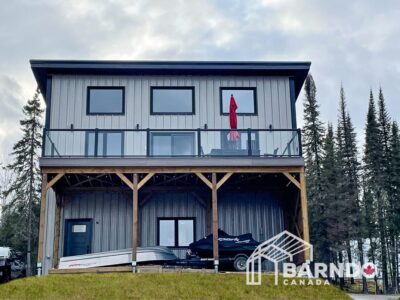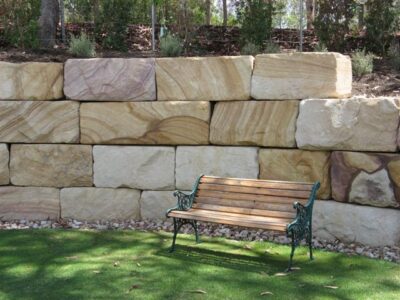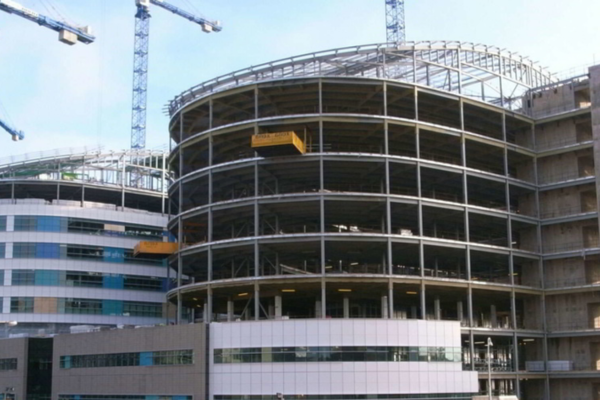
Introduction
In the realm of modern architecture and design, colored concrete has emerged as a revolutionary material that adds aesthetic value while also providing a diverse option for commercial areas. From elegant office interiors to eye-catching retail storefronts, colored concrete is changing the way businesses construct efficient and visually appealing spaces. This blog will look at the creative ways colored concrete is being utilized in commercial buildings and why it’s becoming a popular choice with architects, designers, and company owners alike.
- Enhancing Building Facades
One of the most common uses of colored concrete in commercial buildings is for outside facades. Traditionally, concrete was seen as a dismal, gray substance utilized solely for structural purposes. However, the use of color pigments has given it fresh vitality. Architects may create eye-catching facades by incorporating color into the concrete mix.
For example, many corporate buildings and shopping malls are increasingly employing colored concrete to create distinctive, branded exteriors. This material’s adaptability allows for a wide range of shades—from strong reds and blues to delicate earth tones—that may be tailored to a company’s branding and design ethos. Furthermore, colored concrete is extremely durable, weatherproof, and requires little maintenance, making it excellent for outside applications.
- Beautiful interior flooring
Because of its flawless surface and durability, colored concrete flooring has become a popular choice in commercial interiors. Colored concrete offers a sleek, polished appearance that is both utilitarian and beautiful for restaurants, retail areas, and workplaces. Whether it’s a high-end shop or a minimalist office space, businesses are choosing colored concrete flooring because it allows for endless creative choices.
Beyond its visual appeal, colored concrete is a practical option for industrial flooring. It is stain and abrasion resistant, making it ideal for high-traffic areas. Furthermore, it may be modified with a variety of textures and finishes, including glossy, matte, and terrazzo-like appearances, providing businesses with a wide range of design alternatives.
- Designing artistic walkways and courtyards
Colored concrete is increasingly being utilized imaginatively in outdoor business settings such as courtyards, pathways, and plazas. Colored concrete enables the construction of visually appealing outdoor spaces that improve the consumer experience in retail malls, business parks, and hotels. Designers may create a lively, appealing environment that matches the architecture of the building by incorporating a variety of colors and patterns.
Businesses, for example, may use colored concrete to simulate the appearance of genuine stone or brick for pathways, giving them a high-end feel without the cost. Furthermore, colored concrete may be customized with business logos or unique branding components, increasing the overall visual attractiveness of the outdoor space.
- Accent walls and feature areas
Colored concrete is utilized not just for floors and exteriors, but also to create striking accent walls within commercial buildings. From hotel lobbies to corporate offices, designers are using colored concrete walls to make dramatic statements. These walls can be smooth or textured, depending on the intended effect, and come in a variety of colors to complement the building’s overall style.
In certain situations, colored concrete walls are combined with other materials such as glass, wood, or metal to create an industrial-chic aesthetic. The adaptability of colored concrete makes it a suitable material for generating focal points in commercial settings.
- Sustainable and Cost-Effective Design
Aside from its visual attractiveness, colored concrete is gaining popularity due to its long-term viability and low cost. Many commercial buildings are increasingly concentrating on environmentally responsible construction, and colored concrete fits the bill wonderfully. It may be made using recycled materials, which reduces the environmental effect of new construction. Furthermore, light-colored concrete can reflect heat, minimizing the demand for air conditioning and energy usage.
Colored concrete is also a long-lasting, low-maintenance option for commercial areas, resulting in cost savings over time. Unlike typical flooring or wall materials, colored concrete does not require regular repairs or replacement, making it an excellent investment for businesses.
- Wayfinding and Safety Applications
Colored concrete is frequently utilized for navigation and safety in big commercial venues such as hospitals, airports, and shopping malls. Designers use various hues of concrete to identify distinct regions, such as emergency exits, paths, or specified zones. This not only aids in navigation but also improves the general safety of the place.
For example, different shades of colored concrete can be utilized to distinguish pedestrian pathways from car zones in parking garages, ensuring that users are aware of the designated safe areas. In hospitals, color-coded concrete flooring can help patients and visitors navigate the building more effectively.
Conclusion
Colored concrete is more than simply a structural material; it’s an innovative design element that’s influencing the appearance and functioning of modern commercial buildings. Colored concrete has a wide range of applications, including vivid facades and durable floors, creative walks, and sustainable construction. Its adaptability, durability, and aesthetic appeal make it an excellent choice for organizations seeking to create both beautiful and functional environments. Whether you’re constructing a new office, remodeling a shop space, or improving an outdoor area, colored concrete provides limitless opportunities for creative and sustainable design.
In the ever-changing world of commercial architecture, colored concrete is proving to be a game changer, bringing color and individuality to spaces that were previously defined by neutral tones. As the desire for creative and cost-effective design solutions grows, colored concrete is expected to be at the forefront of commercial construction trends.











